Special tool
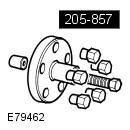 205-857 Remover, Halfshaft 205-857 Remover, Halfshaft | 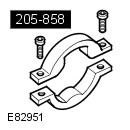 205-858 Remover, Halfshaft Inboard Joint 205-858 Remover, Halfshaft Inboard Joint | 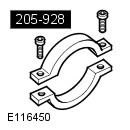 205-928 Remover, Half Shaft Inboard Joint 205-928 Remover, Half Shaft Inboard Joint |
To avoid damage to the ball joint, do not allow the axle shaft to hang unsecured on one side.
To avoid damage to the ball joint, do not store or install the axle shafts in the maximum stowed position.
Roller joints type AAR (Angularly Adjusted Roller), mounted on the inside of some axle shafts, do not have an internal retaining mechanism and therefore may come apart.
Removing
1. Raise and support the vehicle.
WARNING: Place secure stands under the vehicle.
2. Drain the differential oil.
3. Remove the wheel and tire assembly. Refer to procedure: Wheel and tire (204-04 Wheels and tires, Removal and installation).
4, Loosen the rear axle nut.
NOTE: Left side shown, right side similar.
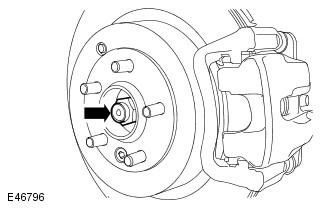
5. Remove the stabilizer link. Refer to Procedure: Rear Stabilizer Bar (204-02 Rear suspension, Removal and installation).
6.
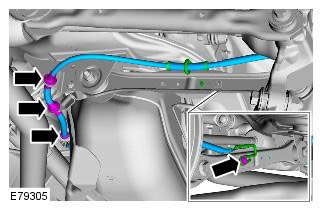
7.
NOTE: Left side shown, right side similar.
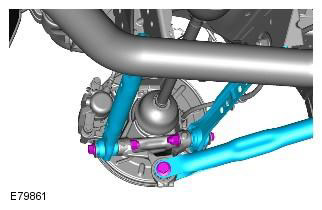
8. Unscrew and discard the rear axle nut.
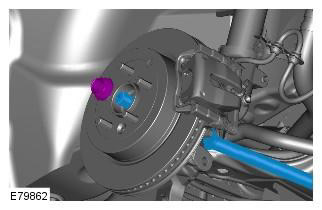
9. Disconnect the rear axle shaft. Special tool: 205-857
NOTE: Left side shown, right side similar.
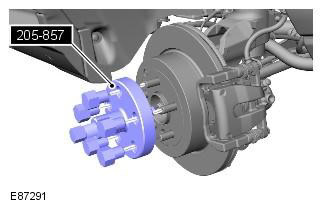
10. Install the special tool on the rear axle inner joint housing. Special tool: 205-858
NOTE: Cars manufactured before 2010 MY.
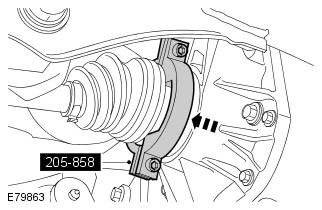
11. Establish the special tool on a casing of the internal hinge of a back semiaxis. Special tool: 205-928
NOTE: Vehicles manufactured since 2010 MY.
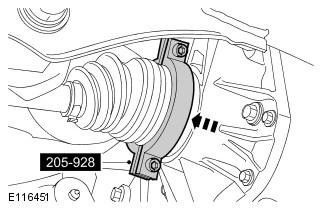
12. Place a container for spilled oil.
13. Together with an assistant, remove the rear axle shaft.
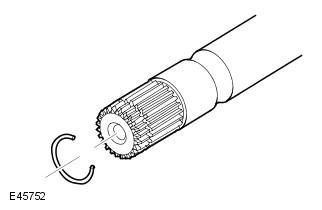
Installation
1. Clean the parts.
2. Install a new retaining ring on the rear axle shaft and, with the help of a partner, attach the inner CV joint to the differential.
Be very careful not to damage the seal.
Make sure the retaining ring is installed on the side of the end of the axle shaft. Failure to do so may result in vehicle damage.

3. Remove and discard the rear axle oil seal guard.
NOTE: The shaft seal guard should come apart in two.
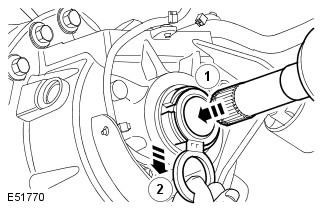
4. Together with an assistant, install the rear axle shaft into the hub.
5. Install a new rear axle nut. Do not fully tighten it at this stage.
CAUTION: Tighten the nuts finger tight only at this stage.
6. Attach both lower arms to the hub assembly. Do not fully tighten at this stage.
CAUTION: Tighten nuts and bolts finger tight only at this stage.
7. Attach the trailing arm to the hub assembly. Do not fully tighten at this stage.
CAUTION: Tighten the nut and bolt finger tight only at this stage.
8. Attach the parking brake cable.
9. Place a jack under the rear hub of the vehicle.
10.
- Tighten the nuts and bolts of both lower arms. Tightening torque: 175 Nm
- Tighten the trailing arm nut and bolt. Tightening torque: 270 Nm
- Tighten the rear axle nut. Tightening torque: Stage 1: 330 Nm. Stage 2: 30°
- Lock the hub nut with a caulk.
Nuts and bolts need to be tightened while the vehicle is resting on the suspension.
Do not use a pneumatic tool to install the nut. Failure to follow this instruction may result in damage to this component.
11. Install the stabilizer link. Refer to Procedure: Rear Stabilizer Bar (204-02 Rear suspension, Removal and installation).
12. Install the wheel. Refer to procedure: Wheel and tire (204-04 Wheels and tires, Removal and installation).
13. Fill the differential with the required amount of oil.
CAUTION: Do not fill the differential with oil up to the hole in the filler plug. The fill plug hole is only used to fill the differential with oil and cannot serve as a level indicator.
Comments on this article